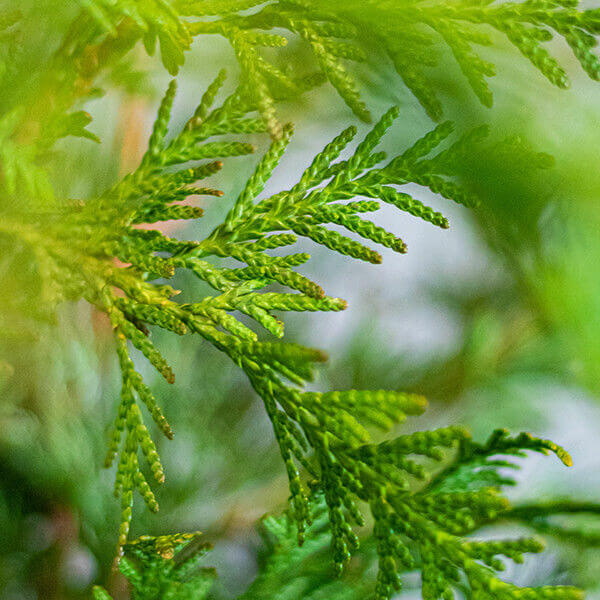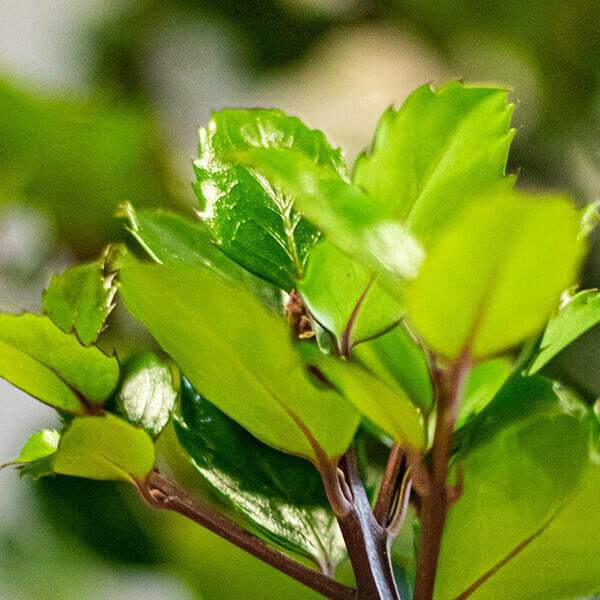Hedge Plants For Creating Hedges
Hedge Plants For Creating Hedges
Blog Article
Hedging Plants For Architectural Interest
Enhance your garden's appeal with rich hedge ranges such as Yew (Taxus), Thuja, Laurel, Photinia, and Bamboo, celebrated for their structural stability and environmental advantages.
Yew and Thuja offer evergreen coverage and winter resilience, while Laurel uses rapid development and broad, fragrant leaves.
Photinia includes seasonal appeal with its dynamic red foliage, and Bamboo lends a low-maintenance, peaceful atmosphere.
These hedges improve air quality, decrease sound, and develop tranquil, personal areas.
Correct planting, spacing, and upkeep ensure energetic development and ecological consistency.
Check out how these rich varieties can elevate your garden's appeal and wellness.
Key Takeaways
Transform Your Garden With Lush Hedge Varieties
- Select Yew for its thick, evergreen growth and exceptional durability.
- Choose Laurel for its fast development and broad leaves, guaranteeing fast personal privacy.
- Select Photinia for its lively seasonal foliage, which turns a striking dark red.
- Utilize Bamboo for a low-maintenance, winter-hardy hedge with aesthetic appeal.
- Area plants 2-3 per meter and prune frequently for optimum growth and health.
Popular Hedge Plants
When changing a garden with lavish hedge ranges, it's important to consider popular hedge plants such as Yew, Thuja, Laurel, and Photinia due to their unique qualities and benefits.
Yew (Taxus) is highly esteemed for its longevity and dense, green growth, making it a prime choice for withstanding landscapes.
Thuja is kept in mind for its evergreen foliage and robust winter season durability.
Photinia adds seasonal vibrancy with red leaves that darken with time, creating vibrant visual appeal.
Laurel offers quick development and aromatic, broad leaves, suitable for quick personal privacy.
Furthermore, Bamboo is an excellent option for ambiance, using a low-maintenance, winter-hardy choice that enhances the garden's aesthetic with its classy, swaying canes.
These choices deal with a range of horticultural needs and choices.
Advantages of Garden Hedges
Garden hedges offer a wide variety of benefits, making them a valuable addition to any landscape. These natural barriers are affordable to implement and offer significant wind security, enhancing air circulation and contributing to noise reduction. The dense foliage of hedges like Thuja and Beech guarantees privacy by obstructing presence, producing a serene and remote environment.
Hedges also play a crucial role in microclimate regulation, providing a steady environment that promotes plant growth and decreases temperature level fluctuations. Their detailed leaf structures filter contaminants, improving air quality and contributing to a much healthier garden community.
Furthermore, hedges master noise decrease, taking in and deflecting acoustic waves to lower ambient sound levels. This dual performance of offering both acoustic and visual personal privacy improves the general tranquility and aesthetic appeal of any garden.
Planting and Upkeep Tips
For an effective hedge, careful preparation of the planting location is vital. Guarantee the soil has appropriate pH and drain to support strong root development.
Space the plants properly for the picked species. Water the hedge often during its initial development phase, adjusting as required with seasonal changes.
Implement a methodical pest control and disease avoidance strategy, using chemical or organic treatments when required. Routinely check for aphids, termites, and fungal infections.
Apply mulch to maintain wetness and reduce weeds. Seasonal pruning promotes thick growth and air circulation, essential for plant health.
Following these guidelines will assist you cultivate a dynamic, well-maintained hedge that boosts the charm of your garden.
Spacing and Cutting Standards
Spacing and Trimming Standards
Correct spacing and trimming are vital for cultivating healthy, visually appealing hedges. Appropriate spacing ensures each plant receives sufficient nutrients, light, and airflow.
Follow these standards for optimal hedge maintenance:
- Spacing: Position hedge plants 2-3 plants per meter to motivate robust development.
- Pruning Methods: Regular pruning is necessary for maintaining desired hedge height and shape. Cut brand-new development in summertime and cut down older wood during winter.
- Seasonal Care: Adjust trimming schedules and techniques according to seasonal requirements to ensure plant health.
- Hedge Height: Routinely monitor and cut to keep the preferred hedge height and accomplish consistent aesthetics.
Complying with these actions will ensure your hedge flourishes, improving both the appeal and performance of your garden.
Selecting the Right Hedge
Choosing the Right Hedge
Selecting the proper hedge includes assessing factors such as fully grown height, foliage density, and ecological resilience. Successful hedge plant selection needs understanding each types' development qualities and site-specific versatility.
For example, Yew (Taxus) uses exceptional longevity and dense development, while Thuja is notable for its winter season strength. Additionally, thinking about upkeep requirements is crucial; fast-growing species like Laurel or Privet demand regular cutting, whereas low-maintenance choices like Bamboo or Ivy might be preferable for those seeking minimal maintenance.
Ecological elements such as soil type, light availability, and moisture conditions should likewise direct the choice procedure. This careful technique ensures the chosen hedges will thrive, supplying both visual and functional advantages to the garden landscape.
Delivery and Planting Recommendations
To guarantee your hedge plants thrive, they should be provided by specialized carriers and planted without delay upon arrival.
Follow these necessary actions for effective planting:
- Soil Preparation: Enhance the soil with organic matter to improve drain and nutrient content.
- Planting Depth: Develop a trench two times the width and equal to the depth of the root ball.
- Watering Methods: Water thoroughly after planting, keeping the soil regularly damp however not saturated.
- Mulching: Apply a layer of mulch to keep moisture and suppress weeds.
Client Support and Service
Provided the important role of prompt help in horticultural pursuits, our customer support group is available 6 days a week through telephone, email, and social media to offer skilled recommendations and quickly resolve any concerns. Their commitment to quick reaction times guarantees consumer satisfaction by dealing with questions connected to plant health, optimal planting techniques, and maintenance schedules.

Interaction Method
-------------------
Within 48 hours
Within 24 hours
This thorough support system, reinforced by a stellar 9.3/ 10 client score, highlights our dedication to improving the gardening experience for each client.
Frequently Asked Concerns
For How Long Does It Consider Hedge Plants to Develop?
Hedge plants typically require one to three years to become totally developed, with the specific duration differing by species and growing conditions.
Efficient care throughout this vital period is vital for robust development. Consistent watering, vigilant weed control, and appropriate fertilizer application are pivotal in promoting strong root development.
For instance, fast-growing types like Laurel might develop more rapidly, while slower-growing varieties such as Yew might take longer. Diligent maintenance accelerates the facility procedure, resulting in dense and healthy hedges.
What Are the Finest Hedge Plants for Personal Privacy?
The concern of the best hedge plants for privacy involves examining evergreen and deciduous alternatives.
Evergreen hedges like Thuja, Laurel, and Cypress offer year-round coverage, ensuring constant personal privacy.
In contrast, deciduous hedges such as Beech provide seasonal privacy, shedding leaves in colder months.
Secret upkeep ideas for personal privacy hedges include routine cutting, fertilizing in spring, and correct spacing-- normally 2 to 3 plants per meter.
Furthermore, consistent watering and thorough weed elimination are essential for promoting healthy, thick growth.
Can Hedge Plants Draw In Wildlife to My Garden?
Yes, hedge plants can bring in wildlife to your garden by providing necessary advantages like shelter, food, and nesting sites, thereby boosting local biodiversity. For circumstances, yew, holly, and laurel are outstanding for attracting birds, while ivy supports a range of insects.
However, it is essential to note that there are some disadvantages, such as increased upkeep to manage bugs and regular maintenance. Carefully picking and preserving hedge ranges can help stabilize these downsides and benefits, ultimately fostering a lively and sustainable community in your garden.
Exist Any Flowering Hedge Plants Available?
Yes, there are flowering hedge plants offered that can boost the beauty of your garden.
For example, Elaeagnus, likewise understood as Olive Willow, produces fragrant white flowers in the fall, adding a touch of beauty.
Photinia, another popular option, showcases lively red leaves that mature into a rich green, developing a dynamic visual effect throughout the seasons.
To guarantee these plants grow, it's necessary to practice appropriate pruning methods and seasonal upkeep, such as cutting brand-new development in the summer and cutting back in the winter.
These steps will assist preserve the health and visual appeal of your blooming hedges.
How Do I Avoid Bugs in My Hedge Plants?
To avoid bugs in hedge plants, use natural bug control approaches and maintain proper hedge care. Introduce advantageous bugs like ladybugs, which take advantage of hazardous insects, to produce a balanced ecosystem.
Regularly inspect your hedges for signs of infestation and quickly remove any afflicted parts to avoid the spread. Make sure the health of your hedges by applying well balanced fertilizers and supplying appropriate water.
Make use of mulching to maintain soil wetness and appropriate spacing to decrease plant stress and promote robust development. These practices jointly assist in decreasing bug concerns and preserving a healthy hedge.
Conclusion
In essence, picking the ideal hedge ranges such as Yew, Thuja, and Laurel can transform any garden into a relaxing sanctuary. These plants offer year-round greenery, improve aesthetic appeal, and deal practical advantages like sound decrease and wind security.
Proper planting strategies, precise spacing, constant watering, and seasonal cutting are vital for optimal growth.
Trustworthy shipment services and professional client assistance ensure a smooth experience from purchase to planting, making it easier than ever to elevate your outside space.
Garden hedges offer a wide variety of benefits, making them a valuable addition to Additional resources any landscape. These natural barriers are affordable to carry out and offer significant wind defense, enhancing air blood circulation and contributing to sound reduction. The thick foliage of hedges like Thuja and Beech guarantees personal privacy by obstructing exposure, producing a remote and serene environment.

Pruning Strategies: Regular pruning is important for preserving preferred hedge height and shape. Trim brand-new growth in summertime and cut back older wood throughout winter season.
Report this page